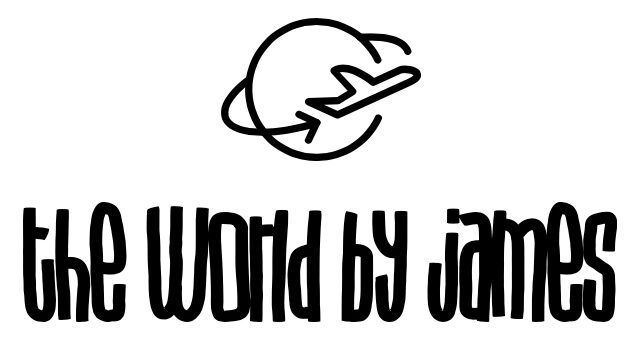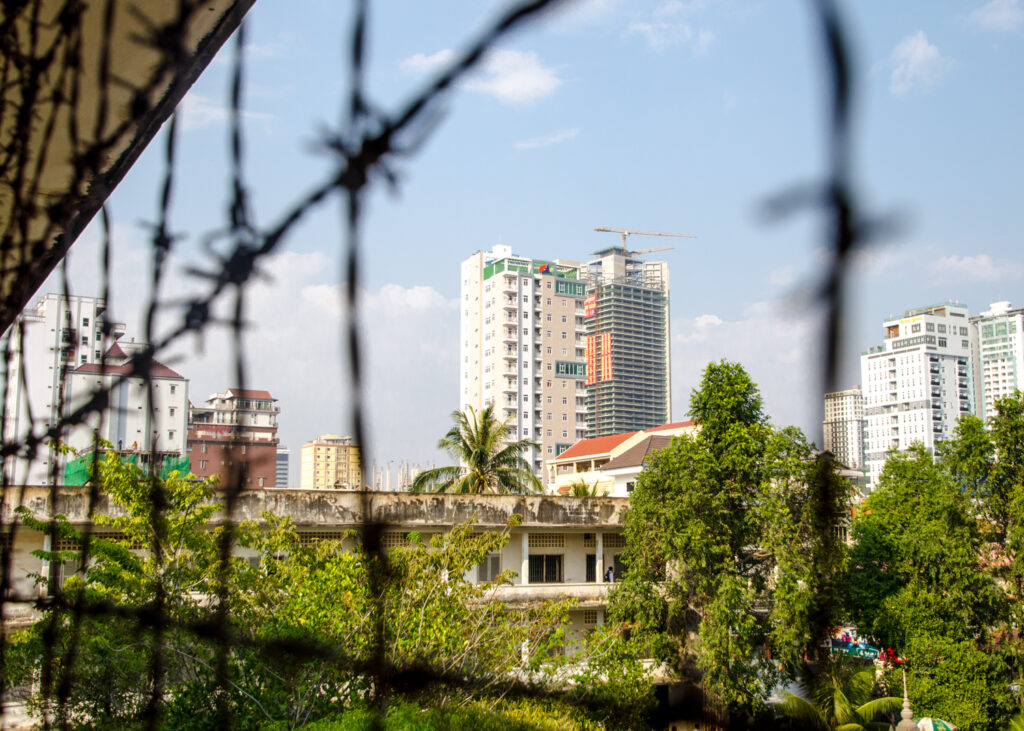Disclosure: This post contains affiliate links that I may earn a small commission from if you purchase something through them. This comes at no extra cost to you!
No travel itinerary for Cambodia is complete without seeing the Killing Fields at Choeung Ek and the Tuol Sleng Genocide Museum (S21) in its capital city, Phnom Penh.
It’s well known that Cambodia has a tragic past, and what makes it even more tragic is that is wasn’t even that long ago. Both of these sites are directly linked to the Cambodian Genocide, in which 25% of the entire Cambodian population was wiped out in just 4 years.
It was orchestrated through the mind of dictator and communist party leader Pol Pot. Never heard of him? His crimes were arguably more savage and barbaric than that of other genocidal maniacs like Hitler, Stalin and Mao, but he somehow flies under the radar in the western world. It is a name everyone should know, and after a trip to Cambodia, hopefully one you’ll never forget.
It’s a fact that the famous temples of Angkor Wat are the number one thing to see in the country, but I’d argue that visiting these two sites follows closely behind. It will be an incredibly disturbing and emotional day, but a necessary one that I believe should be mandatory when visiting the country.
It’s best to be as prepared as you can be for the tragic atrocities you’ll be faced with, so this will not be a very pleasant post to read. Some details are graphic – you have been warned!
Table of Contents...
Toggle
Useful information for Siem Reap
- Country: Cambodia
- Language: Khmer
- Currency: Cambodia uses two currencies, USD and Cambodian Riel. You can pay in either, although USD is more common. If you buy something in USD that costs less than $1, you’ll get your change back in Riel. £1/$1 = 5100/4100 Riel.
- Visa info: Most nationalities can get a visa on arrival at a Cambodian air or land border. The price varies but is around $30-$40 (must be paid in USD), and it is valid for one month.
- SIM cards: I highly getting a SIM card for your travels in Cambodia. This means you can use apps like Grab for cheaper taxi fares but it also means you’re always connected to the world, never needing to rely on WiFi. Metfone, Smart & Cellcard are the three options and all have good coverage. You can also get an E-SIM on Get Your Guide which is valid in more than one country. Choose your plan here.
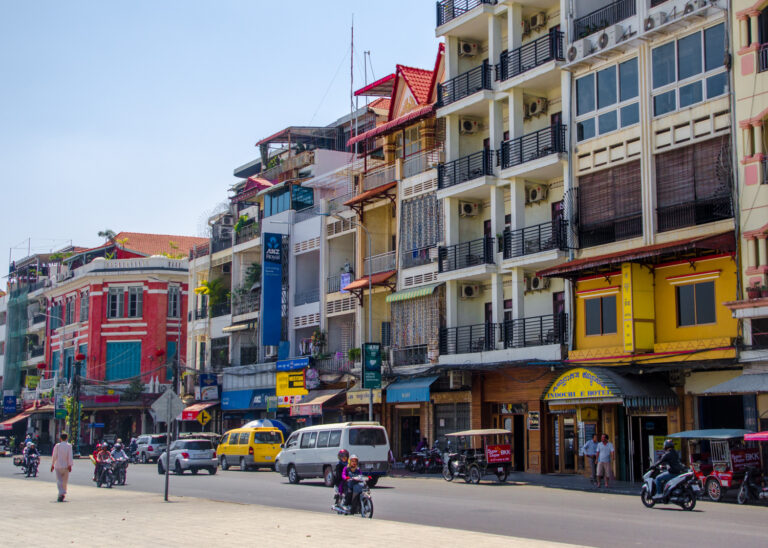
About the Khmer Rouge Regime
First, a quote from the leader of the Khmer Rouge, Pol Pot, to set the scene:
“If you want to kill the grass, you also have to kill the roots.”
The Khmer Rouge, meaning ‘Red Cambodians’, was a communist movement that overthrew the Cambodian government in 1975 and seized power of the country. For the next four year they began one of the most brutal and inhumane massacres of a population in world history.
From 1975 to 1979, under orders from leader Pol Pot and funded by the Chinese Communist Party, the Khmer Rouge slaughtered 25% of the entire population of Cambodia in order to ‘start fresh’. For reference, that’s an estimated 1.4 to 2 million people, which is the equivalent of about 45 people every hour for 4 years straight.
Pol Pot wanted to create a classless, self-sufficient agrarian country, meaning city people were forcibly transported to rural areas to work in labour camps in brutal conditions where malnutrition, torture, rape and murder were rife.
Regular people were imprisoned at Tuol Sleng Prison (now the S21 museum) and tortured on suspicion of being against the regime. They were held there if they were deemed an intellectual, wore glasses, had high school education, or even so much as had soft hands!
Once a confession had been drawn through rigorous methods of torture, they were then taken to the Killing Fields and mercilessly executed before being dumped in one of the various mass graves.
Transport options
The S21 Museum is in the centre of Phnom Penh, so you could easily catch a tuktuk or book a Grab to get there. You’ll need to organise transport to get to the Killing Fields at Choeung Ek though, as it’s about 17km away.
- Grab: I used Grab (Asia’s Uber) to get to the Killing Fields because it’s incredibly affordable and convenient. A ride out there with Grab will only cost around $2 – $4.
- Tuktuk: Flag down a tuktuk driver for the ride out, or hire one for the day for around $15. They won’t guide you, but they can wait for you while you explore. Make sure you agree on a price beforehand if you choose this option!
- Book a tour: You could also take a small group tour and have a knowledgeable local guide with you every step of the way. You’ll be transported around in an air conditioned vehicle and be able to ask any burning questions you may have. Companies like GetYourGuide and Viator offer great tours to both sites in this guide.
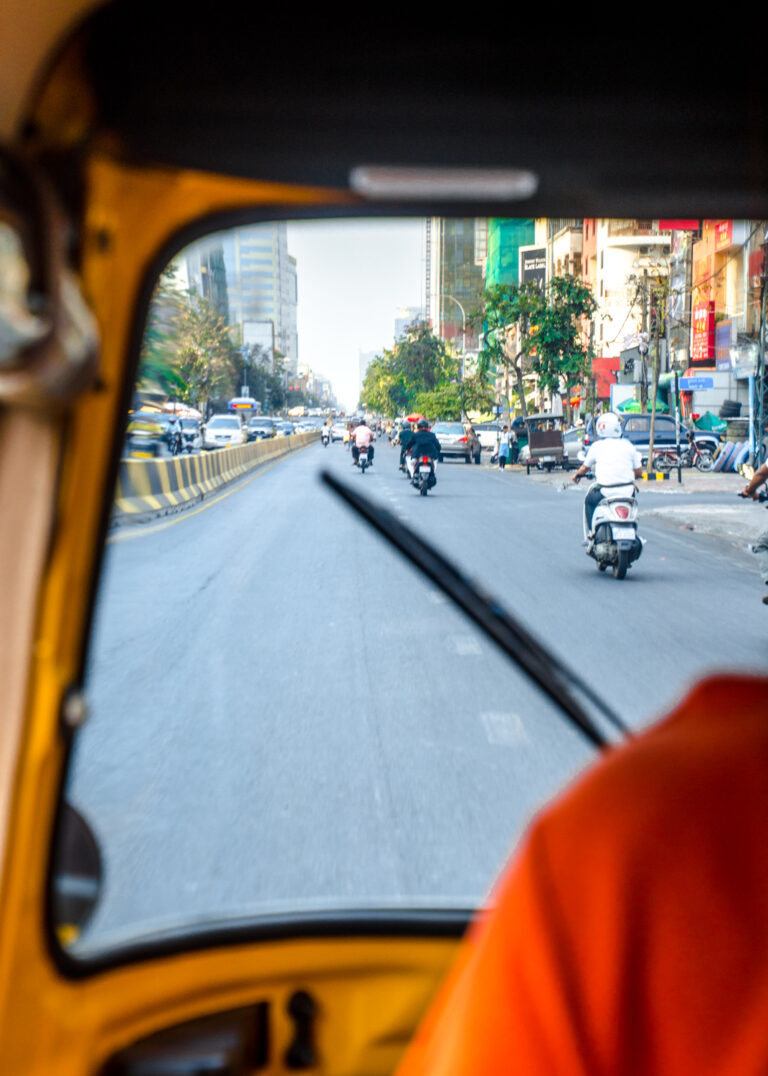
Tuol Sleng Genocide Museum (S21 Museum)
I recommend going to S21 before the Killing Fields to see what so many unfortunate Cambodians had to endure before they were executed at the Killing Fields.
Visiting details for S21
- Location: View the location on the interactive map below.
- Entrance fee: $5 with an audio guide – highly recommended!
- Opening times: 8am – 5pm
- How much time to allow: 1 – 2 hours
What to expect at S21
Up until the Khmer Rouge transformed Tuol Sleng into a barbaric prison in 1975, it was just another high school in the busy centre of Phnom Penh.
These days, the school-turned-prison is a memorial to the lives lost and a reminder of the shocking crimes that once took place here, much of it remaining as it was.
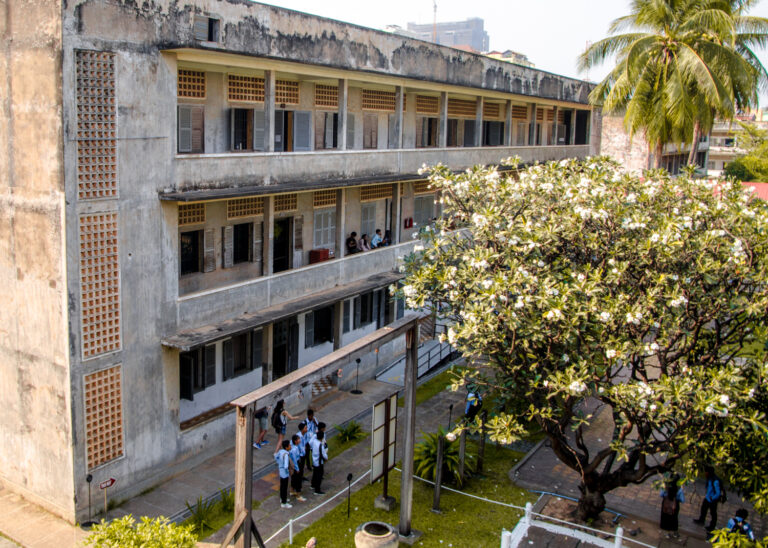
The site is enclosed by barbed wire and has four main buildings. Building A houses large cells, B is predominantly a photo gallery, C is where the tiny cells are, and D displays various torture techniques. The audio guide will talk you through each room in detail.
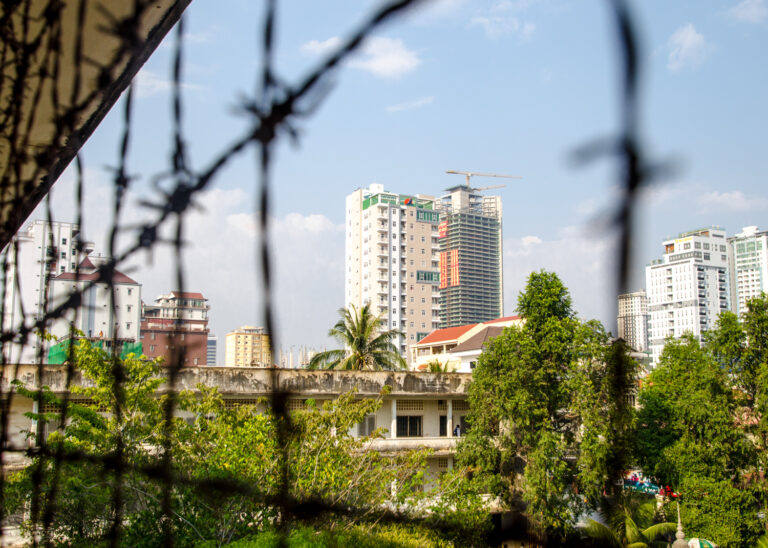
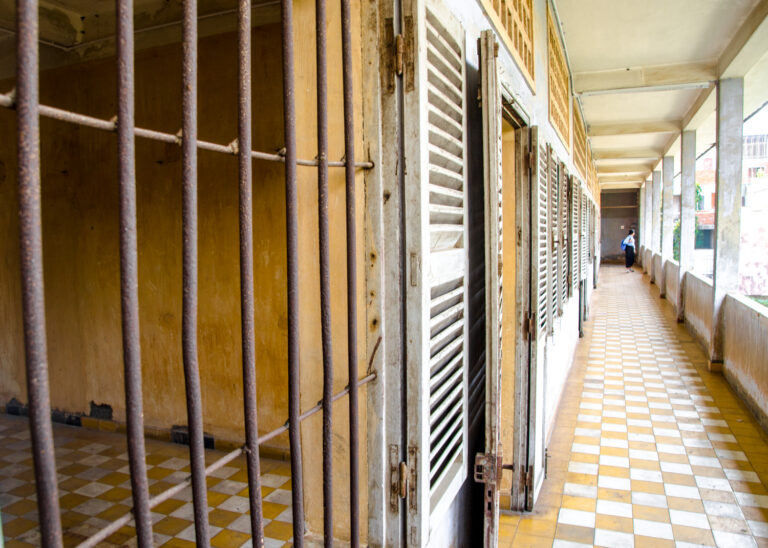
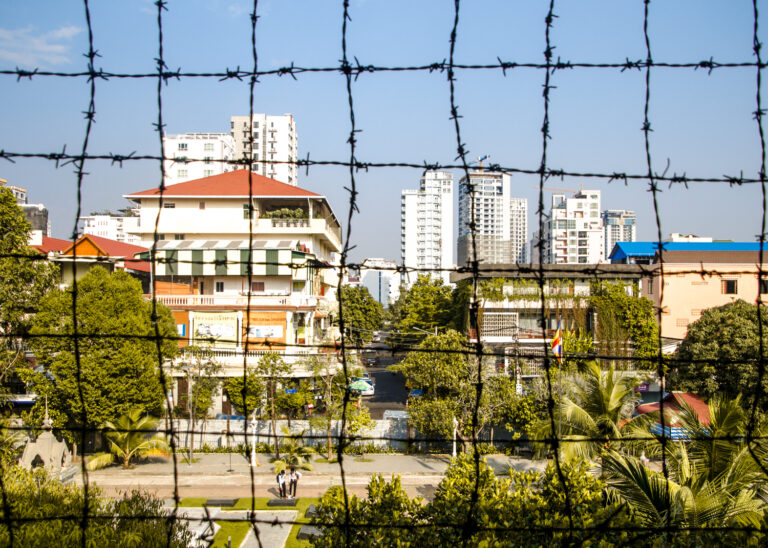

Some classrooms were converted into mini brick prison cells which measure just 1×2 metres (about the size of a shower). You can still see dried blood stained into the floor in some areas – a stark reminder of the living hell these people went through.
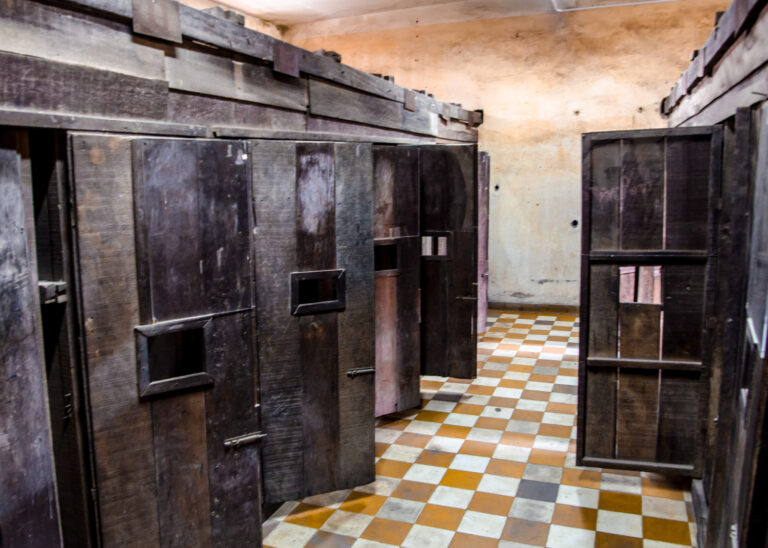
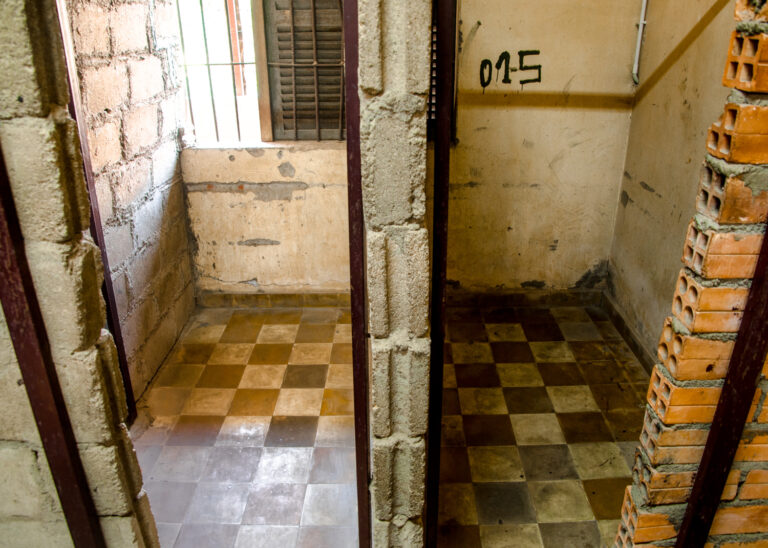
Prisoners endured various methods of torture and interrogation throughout their stay at Tuol Sleng, such as waterboarding, electric shocks, acid showers and fingernail removal.
They used a wooden frame in the courtyard (formerly the playground) to torture captives by hanging them upside down with their head in a barrel of water. Live autopsies were also performed. They would hang women up on hooks through their throat and mouth before removing their hearts while they were still alive.
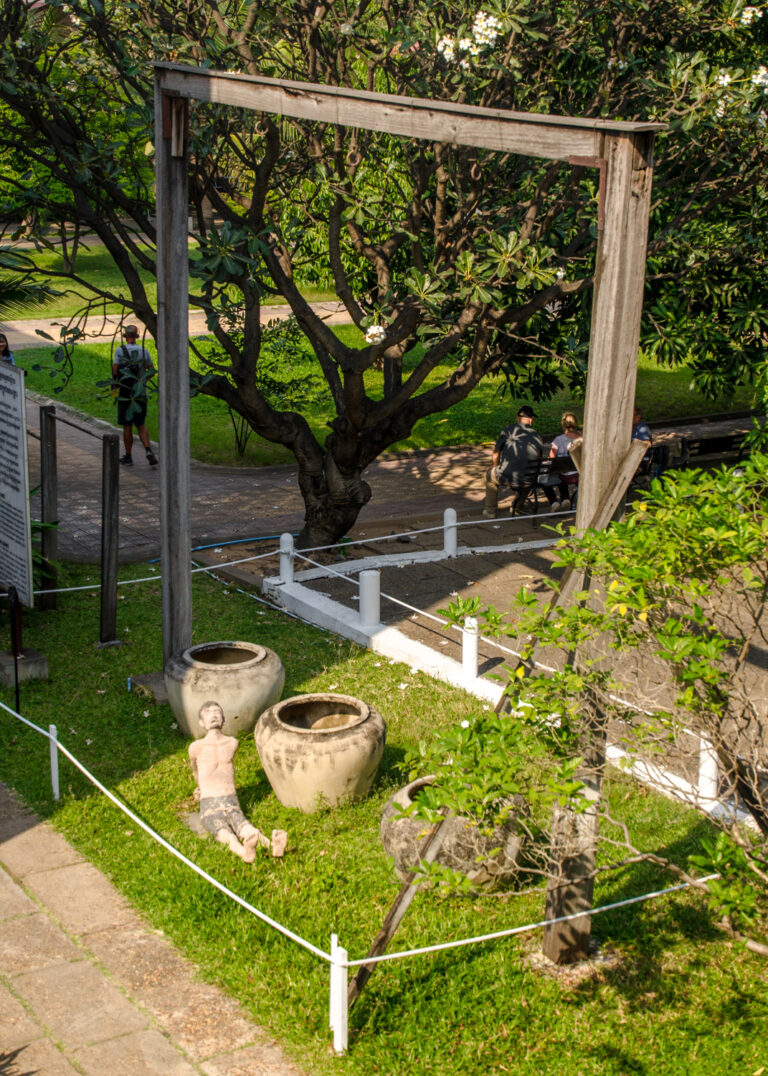
Outside you can also see the list of “security regulations”, kind of like the Khmer Rouge’s Ten Commandments for Tuol Sleng.
Rules include “if you disobey any point of my regulations you shall get either ten lashes or five shock of a electric discharge”, “while getting lashes or electrification you must not cry at all” and “do nothing”.
Once prisoners ultimately admitted guilt just to make the pain stop, they were transferred to Choeung Ek to meet their fate.
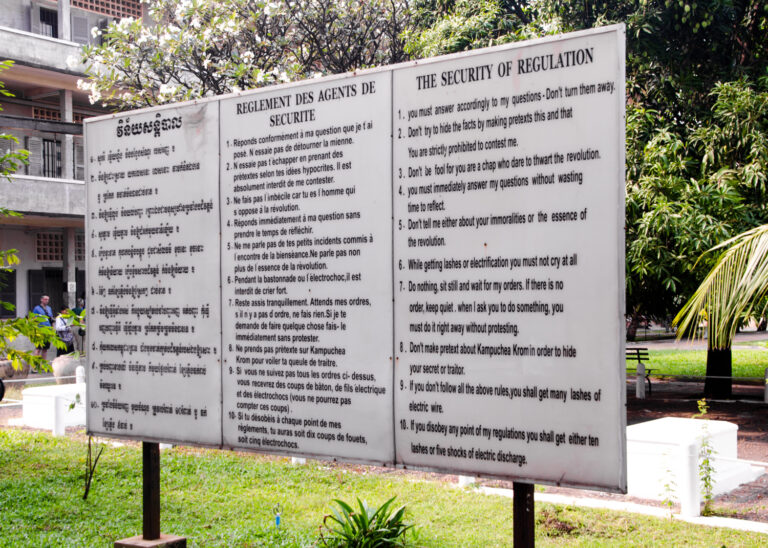
Similar to the Nazis, the Khmer Rouge meticulously photographed every single person who entered S21 and kept records for the prisoners. Their eyes will eerily follow you from room to room through the displays.
An estimated 14,000 – 20,000 people came to Tuol Sleng, and of that number only 7 were alive to tell the tale when the Vietnamese arrived in 1979. Sometimes they would kill upwards of 50 people per day.
The walls are covered in incredibly vivid photos and paintings depicting this, some of which were even taken by the Khmer Rouge themselves.
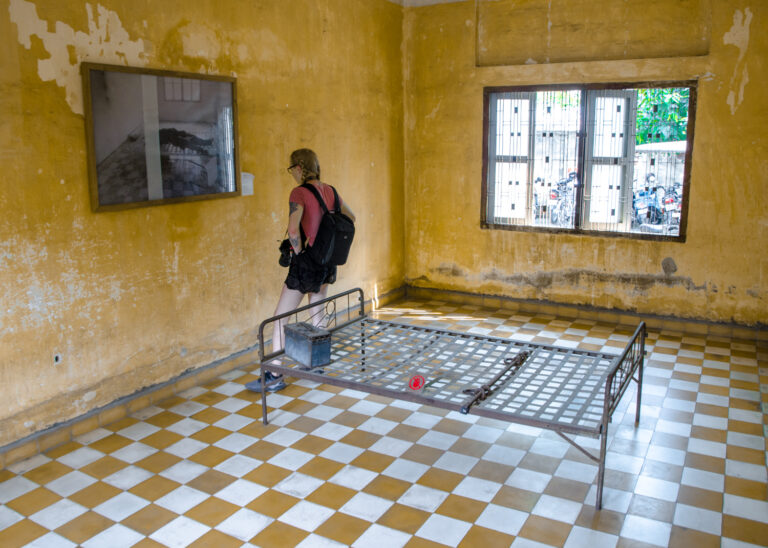
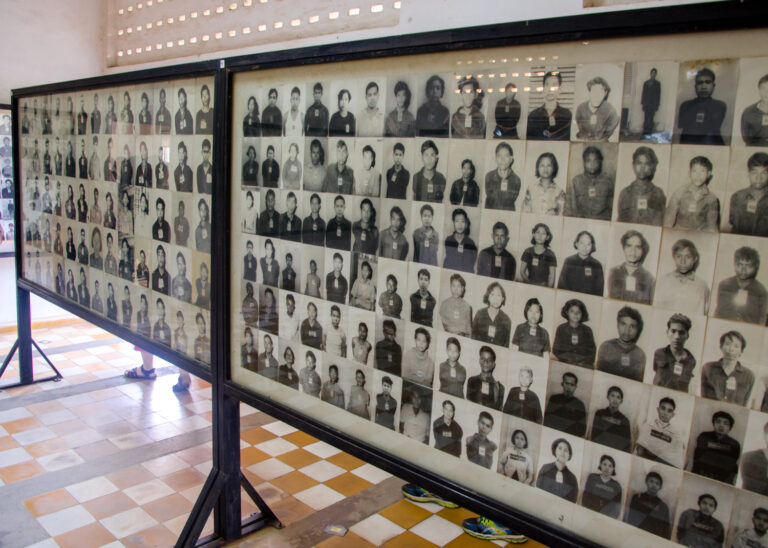
Everyone but those 7 remaining people had been quickly tortured to death before the Khmer Rouge fled, leaving behind recently-mutilated bodies still chained to beds and some people still slowly dying post-torture.
To say it’s graphic would be an understatement, but perhaps it should be that way, no matter the morbidity.
Choeung Ek Genocidal Centre (The Killing Fields)
Nothing can prepare you for the things you’ll see here, so grab an audio guide and brace yourself as best you can.
Visiting details for Choeung Ek
- Location: View the location on the interactive map below.
- Entrance fee: $6 with an audio guide – highly recommended!
- Opening times: 8am – 5:30pm
- How much time to allow: 2-3 hours
What to expect at The Killing Fields
On the outskirts of Phnom Penh, 17km from the centre, lies the former extermination camp of Choeung Ek, known as the Killing Fields.
Over 1 million deaths took place across the country in various killing fields, but Choeung Ek is the most notorious. In this relatively small area nearly 20,000 people were discovered in 129 mass graves, however 43 of those graves have been left untouched.
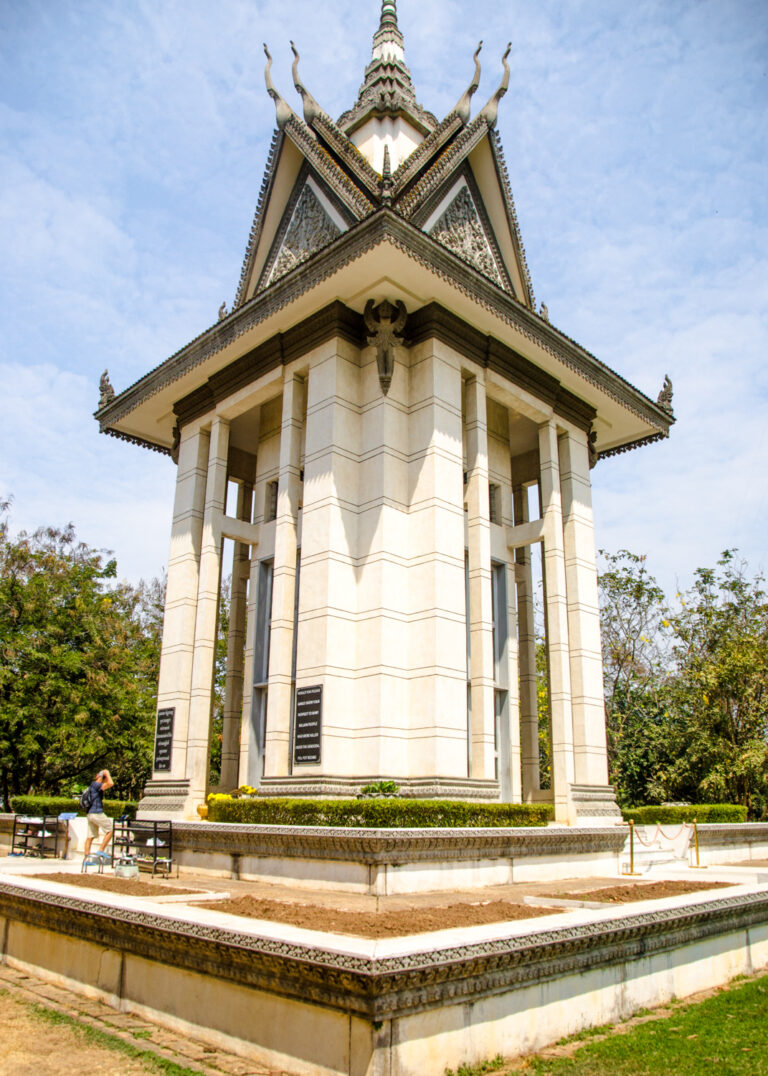
The Memorial Stupa is probably the first thing you’ll see, which shows the damaged skulls of around 9,000 victims who were unearthed in 1980 and found blindfolded and tied up. It explains the wounds inflicted that ultimately caused their death, as well as displaying some items that were used to kill them.
The Khmer Rouge didn’t use guns to execute people because bullets were so expensive. Instead, they used blunt objects and things like spades, screws, farming equipment, hammers and knives.
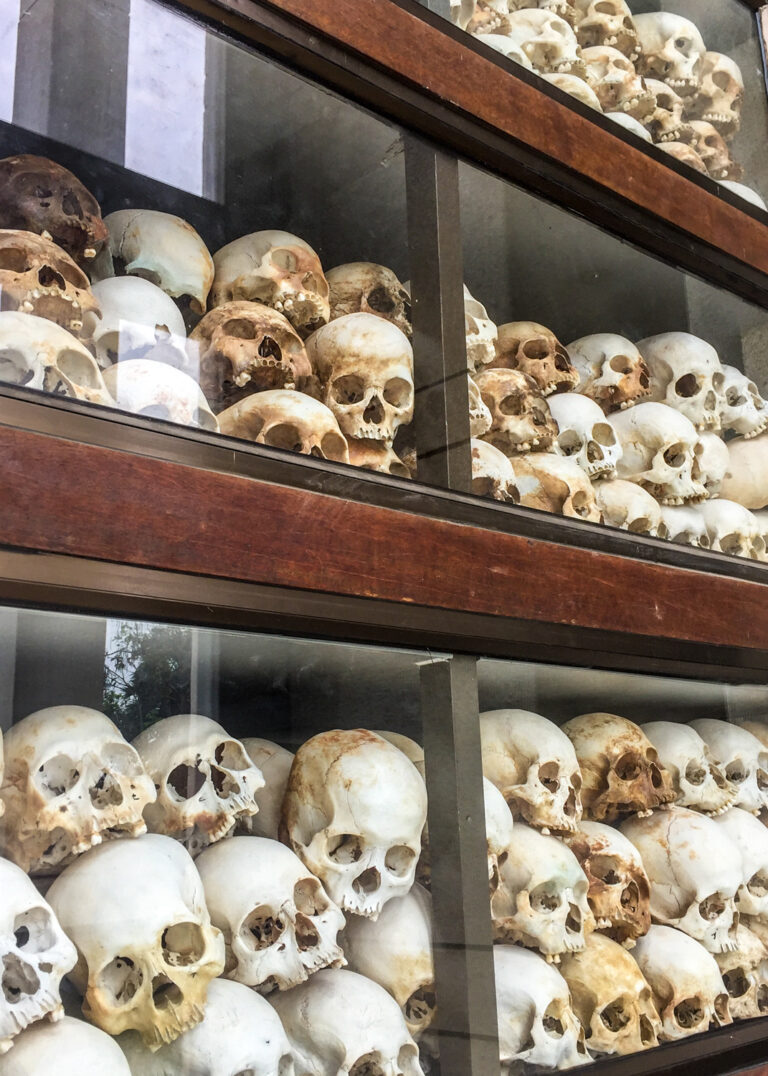
Walking around the area while listening to the raw details given through the audio guide from the voice of a former guard and executioner here adds a whole other layer to the darkness.
Because the prisoners were forced to dig their own graves and they were heavily malnourished and weak, most graves are incredibly shallow. Some of them still have items of clothing or pieces of human bone visible in the dirt. If there is heavy rain, sometimes skeletons become visible.
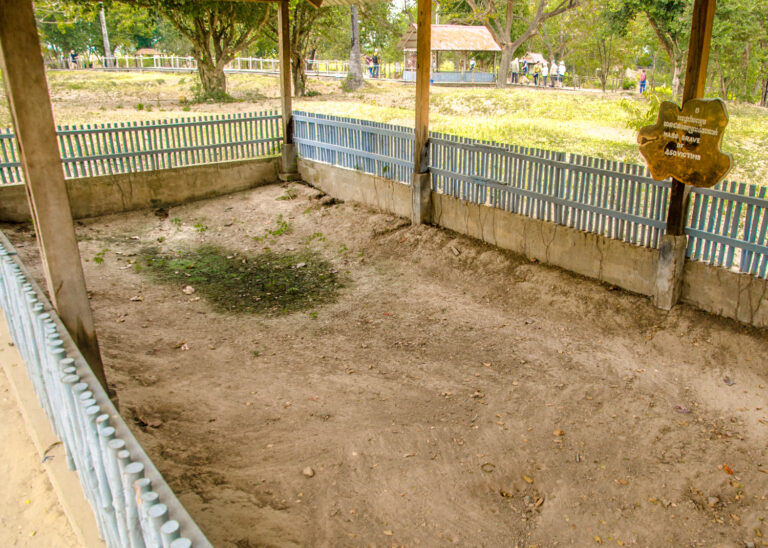
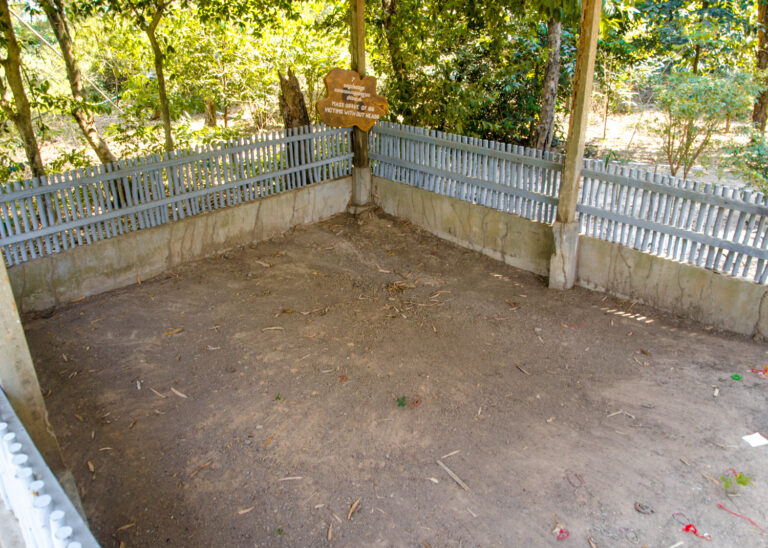
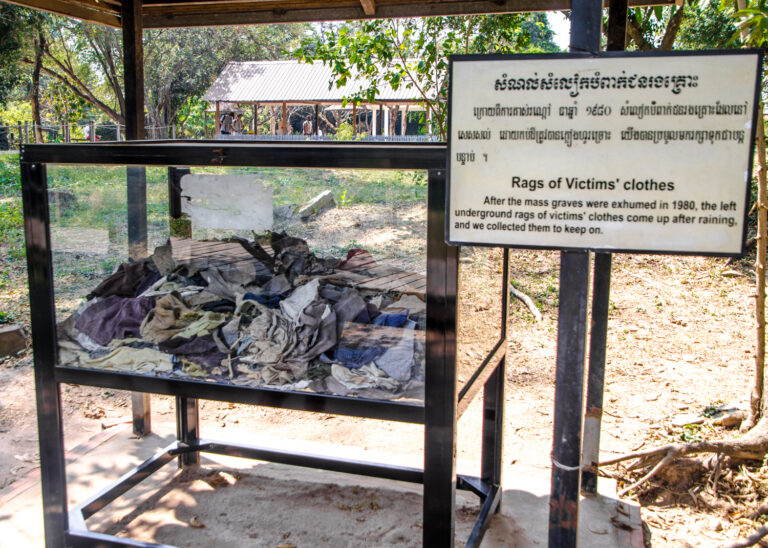
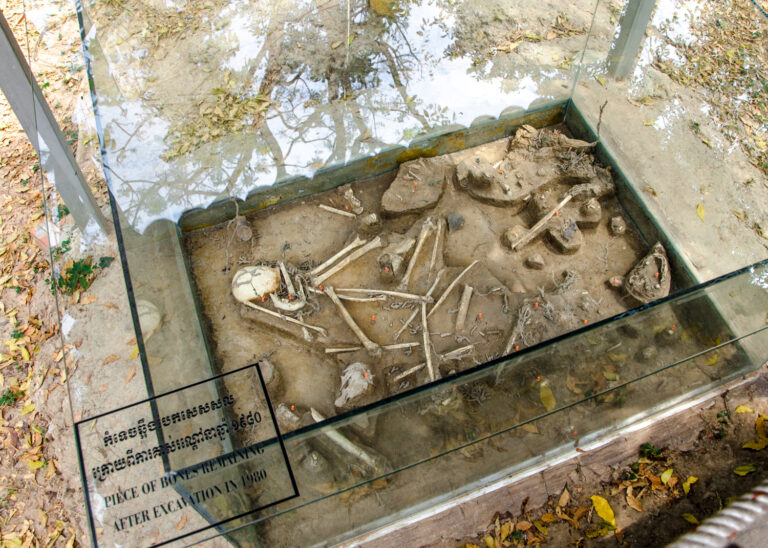
Of all the dark, twisted and unsettling things to see at Choeung Ek, the Killing Tree is probably the worst.
Here, babies and children were separated from their families and taken to the large tree, known as Chankiri, where their captors would mercilessly hold them by their feet and smash their heads against the trunk. After that, they were thrown into the pits to be buried with the other corpses.
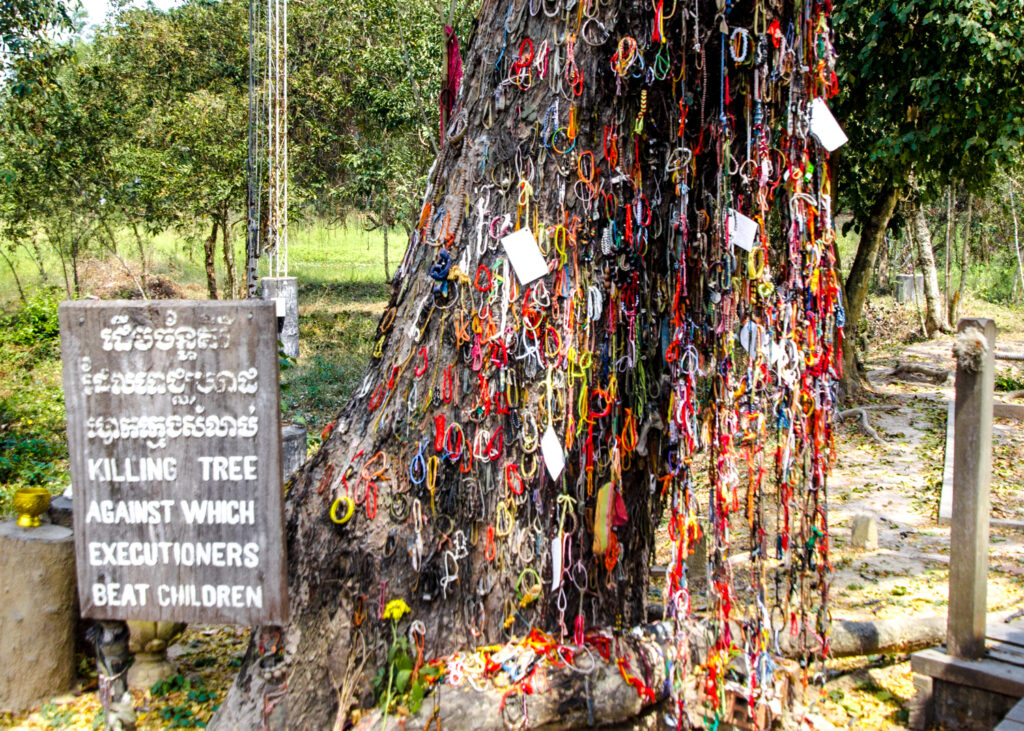
The tree is an eerie place to stand, that’s for sure, and it feels like you can almost hear their screams the more you stare at it.
The justification given for killing infants and children was that their their parents were accused of crimes against the regime and one day the child could come seeking justice for their deaths.
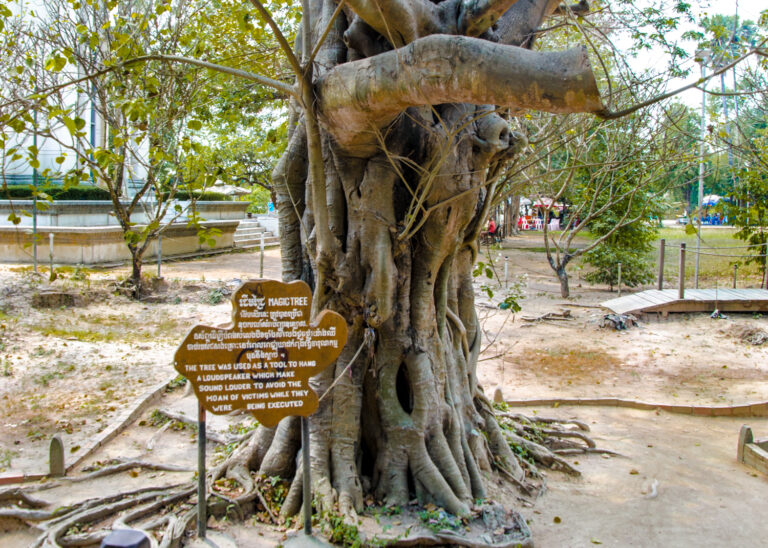
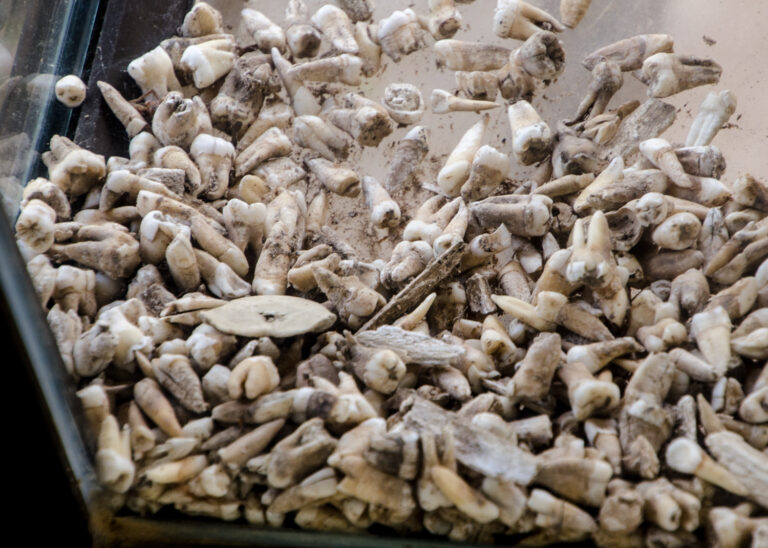
There’s a walking path around the site and a large lake nearby too, which is said to still have the bodies of many victims in it as to not disturb their peace in their final resting place.
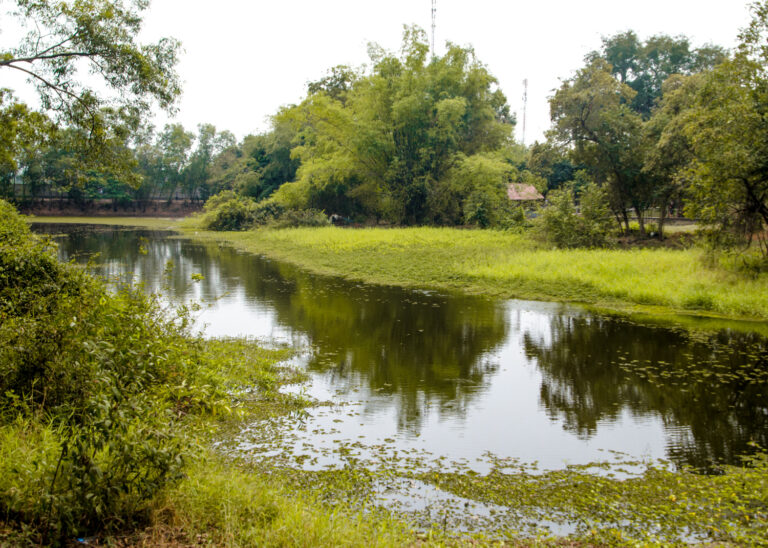
Where to stay in Phnom Penh
Phnom Penh is packed with budget-friendly accommodation options, the best of which are found on Booking.com and Hostelworld.
This one is one of the best hostels in town:
Find somewhere you like on Hostelworld below.
Packing essentials for Cambodia
- Travel camera
You’ll want to remember your time at Angkor Wat, and what better way than having a compact travel camera to take nicer photos than a phone. I use this one which, for me, is an essential item anywhere. - Water
Make sure you pack a reusable water bottle and plenty of water as it will be a sweaty one at any time of year! - Portable charger
This will be a long day out and you’ll be taking lots of pictures. Therefore, best pack a portable charger so you can charge your devices on the move. - Hat, sunscreen and sunglasses
You’ll be exposed to the sun for most of the day, so make sure you protect yourself!
Thinking of visiting Southeast Asia soon? Don’t miss these essential guides to help planning your trip:
Best tours in the area
As good as the audio guides in both sites are, sometimes it pays to have a physical guide with you.
On these small group tours with GetYourGuide or Viator you’ll be transported around various locations in an air conditioned vehicle and you’ll be able to ask your local guide any questions you have.
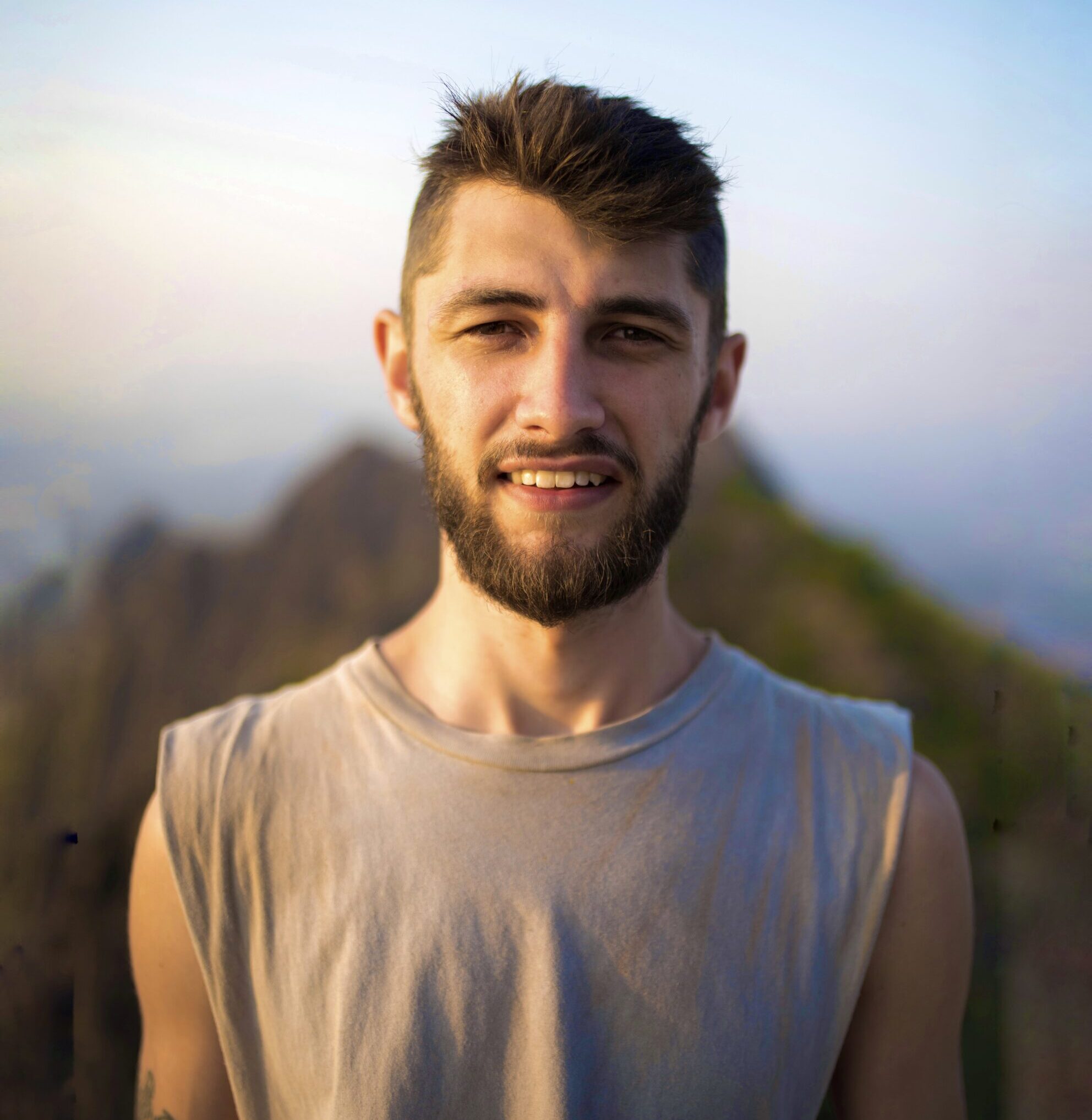
Thank you for reading this travel guide – I hope you found it helpful! Feel free to leave a comment below if you have any questions and I’ll get back to you as soon as possible
Happy travelling!
HELPFUL RESOURCES FOR PLANNING YOUR TRIP
Accommodation: Booking.com, Hostelworld
Tours: GetYourGuide, Viator, Klook, TripAdvisor
Transport: 12Go, Omio, Trip.com, Rome2Rio
WHO IN THE WORLD IS JAMES?
Click below to learn more about my story, including 5 random facts about me, some travel FAQ’s and my entire travel history.
